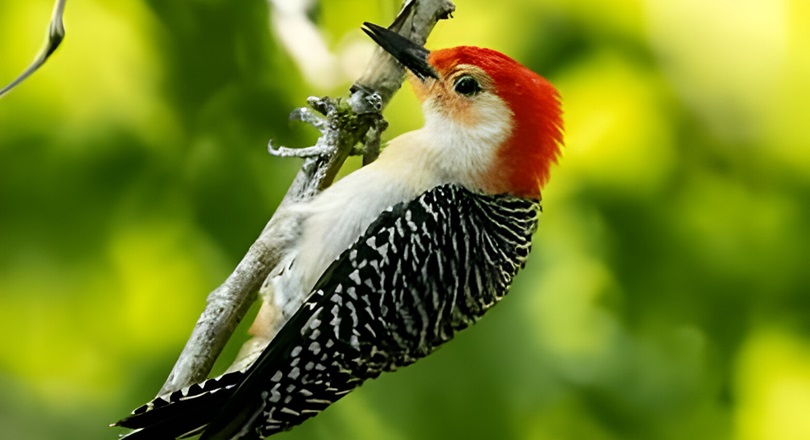Last Updated on February 28, 2025
A bird’s heart has four chambers. These chambers are two atria and two ventricles.
Birds possess highly efficient cardiovascular systems. Their four-chambered hearts are crucial for maintaining high metabolism rates. This structure ensures complete separation of oxygenated and deoxygenated blood. It allows birds to sustain vigorous activities like flying. The right atrium receives deoxygenated blood from the body.
It then moves to the right ventricle, which pumps it to the lungs. The oxygen-rich blood returns to the left atrium. The left ventricle then pumps it throughout the body. This efficient circulatory system supports their high-energy lifestyle. It helps birds thrive in various environments. Understanding the bird’s heart structure reveals much about their remarkable endurance and agility.
The Bird Heart Structure
Birds have a fascinating heart structure. Understanding it can reveal much about their efficiency and endurance. Unlike other animals, birds have a unique heart that helps them fly long distances.
Keep Reading: How To Tell If A Bird Is Stunned Or Dead?: A Quick Guide
Anatomy Of The Avian Heart
Birds have a four-chambered heart. This is similar to humans. The heart consists of two atria and two ventricles.
The right atrium receives deoxygenated blood from the body. It then sends this blood to the right ventricle. From there, the blood goes to the lungs for oxygenation.
The left atrium receives oxygen-rich blood from the lungs. This blood then moves to the left ventricle. The left ventricle pumps it to the rest of the body.
This structure ensures that oxygen-rich and oxygen-poor blood do not mix. This separation is crucial for efficient oxygen delivery.
Comparing Bird And Mammal Hearts
Bird and mammal hearts have similarities. Both have four chambers. This allows efficient blood circulation. However, there are differences too.
Bird hearts are more efficient than mammal hearts. Birds need to fly and require more oxygen. Therefore, their hearts pump blood more effectively.
| Feature | Bird Heart | Mammal Heart |
|---|---|---|
| Chambers | Four | Four |
| Efficiency | Higher | Lower |
| Oxygen Demand | High | Varies |
Birds have a higher heart rate. This helps meet their high oxygen needs. Mammals have varying heart rates. It depends on their size and activity level.
Key Points:
- Bird hearts have four chambers.
- They are more efficient than mammal hearts.
- Birds need more oxygen for flight.

Credit: glencoe.mheducation.com
Keep Reading: How To Get Birds Out Of Your Chimney? Safely & Quickly
Four Chambers: Function And Importance
Birds have a unique heart structure with four chambers. This structure is essential for their survival and efficiency. These chambers include two atria and two ventricles. The four-chambered heart plays a crucial role in separating oxygenated and deoxygenated blood. This separation ensures that birds get the necessary oxygen to their muscles, especially during flight. Understanding the function and importance of these chambers is vital.
Separation Of Oxygenated And Deoxygenated Blood
The bird’s heart has a distinct separation between oxygen-rich and oxygen-poor blood. The right atrium receives deoxygenated blood from the body. This blood then moves to the right ventricle. From here, it is pumped to the lungs for oxygenation.
The left atrium collects oxygenated blood from the lungs. This oxygen-rich blood moves to the left ventricle. The left ventricle then pumps this oxygenated blood to the rest of the body. This separation ensures that birds receive a constant supply of oxygen, which is vital for their high metabolism.
Efficiency During Flight
Flight demands a lot of energy and oxygen. The bird’s four-chambered heart supports this need efficiently. The separation of blood allows for a continuous supply of oxygen to the muscles. This is crucial during long flights.
During flight, the bird’s heart can beat up to 1,000 times per minute. This rapid heartbeat ensures that muscles get the oxygen they need. The four-chamber system is an evolutionary advantage for birds. It enables them to fly long distances without tiring quickly.
| Chamber | Function |
|---|---|
| Right Atrium | Receives deoxygenated blood from the body |
| Right Ventricle | Pumps deoxygenated blood to the lungs |
| Left Atrium | Receives oxygenated blood from the lungs |
| Left Ventricle | Pumps oxygenated blood to the body |
The four chambers of a bird’s heart are vital for their survival. This structure ensures that they have the energy to fly and thrive.
Evolutionary Insights
Birds are fascinating creatures, not just for their ability to soar the skies but for their unique physiological adaptations. One such adaptation is their heart, which has evolved to meet the high demands of flight. This section delves into the evolutionary insights behind the bird’s heart structure.
Keep Reading: Do All Birds Lay Unfertilized Eggs? A Comprehensive Guide!
Adaptations For Flight
Birds have a four-chambered heart, similar to mammals. This feature is crucial for their high-energy lifestyle. The heart’s four chambers allow for efficient oxygenation of blood. This means more oxygen reaches the muscles, enabling sustained flight. Birds also have a higher heart rate compared to many other animals. This rapid heartbeat helps pump more blood, meeting the intense energy demands of flight.
Another significant adaptation is the separation of oxygenated and deoxygenated blood. The four chambers ensure no mixing occurs, maximizing oxygen delivery. This efficiency is vital for birds, especially during long migrations.
Comparative Anatomy With Reptiles And Mammals
Reptiles generally have a three-chambered heart. This structure allows some mixing of oxygenated and deoxygenated blood. In contrast, mammals, like birds, have a four-chambered heart. This similarity highlights the convergent evolution of these species.
| Animal | Number of Heart Chambers | Oxygen Efficiency |
|---|---|---|
| Birds | Four | High |
| Reptiles | Three | Moderate |
| Mammals | Four | High |
The evolution of a four-chambered heart in birds and mammals shows an adaptation to high-energy demands. In reptiles, the three-chambered heart is sufficient for their less active lifestyle.
The separation of blood flow in birds and mammals provides a crucial advantage. It allows for a more efficient oxygen supply, essential for their active modes of life.

Credit: avesbiology.com

Credit: study.com
Frequently Asked Questions
Do Birds Have A 3 Chambered Heart?
No, birds do not have a 3-chambered heart. Birds possess a 4-chambered heart, similar to humans and mammals.
Are Birds 4 Chambers Of The Heart?
Yes, birds have a four-chambered heart. This structure allows efficient separation of oxygen-rich and oxygen-poor blood.
What Animals Have A 3-Chambered Heart?
Amphibians and most reptiles have a 3-chambered heart. This includes frogs, toads, salamanders, and lizards.
How Many Chambers Are In A Bird’s Heart?
A bird’s heart has four chambers. These include two atria and two ventricles, similar to a human heart. This structure allows efficient oxygenation of blood, essential for flight.
How Many Chambers Are In A Bird’s Heart?
A bird’s heart has four chambers, just like a human heart.
Conclusion
Birds have a unique four-chambered heart. This efficient design supports high metabolism and active lifestyles. Understanding bird heart anatomy reveals their evolutionary adaptations. Keep exploring avian biology to appreciate these fascinating creatures. Whether you’re a student or bird enthusiast, knowing this helps deepen your knowledge.
Stay curious and keep learning!




